The Art of People Shots
Jul 02, 2024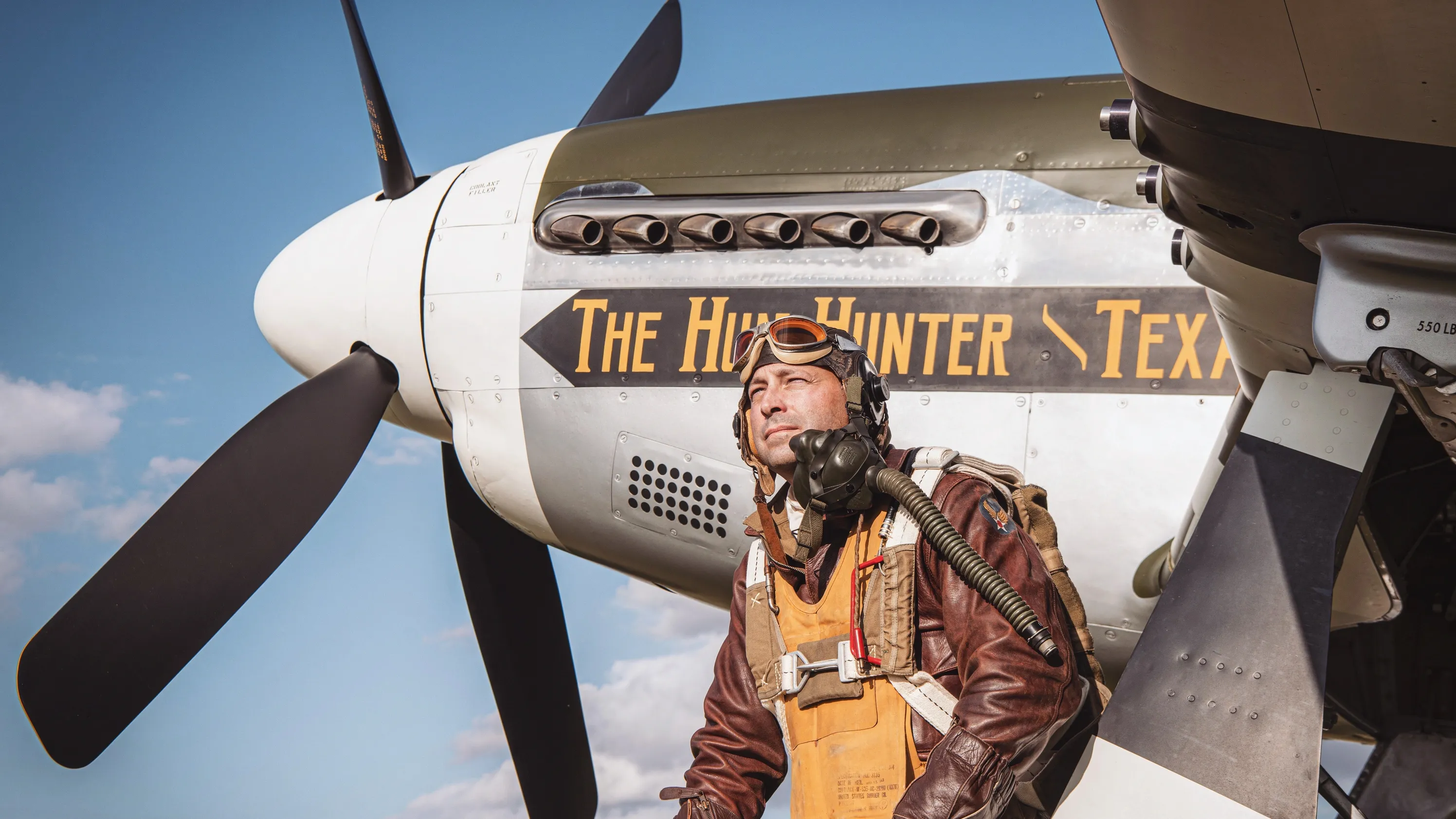
By Tom Carlill
Including People in Your Aviation Pictures
I will start with a confession…. I find taking pictures of static aircraft a bit dull.
I know, controversial. Maybe if there is an interesting sky or a good puddle I might be engaged for a few minutes, but that will be about it. What I love doing is taking pictures of people with static aircraft, which for most scenarios means reenactors and vintage aircraft/warbirds. Reenactors tends to be a bit of a marmite subject, but for me, I find them very rewarding and given the number of reenactor based shoots in the UK, I thought I would write about my experiences of these shoots for those who aren’t sure about including people in their shots and give tips on how to get the most out of these opportunities.
As a general rule, if you are including people in your picture, your eye needs to look at the people not the aircraft if you want to tell a story. You also don’t need to include the whole aircraft, just enough to give it context. Generally, the people need to be in the foreground, in focus, correctly exposed and they need to be engaging. That’s why you need the right kind of people and not all people are the same!
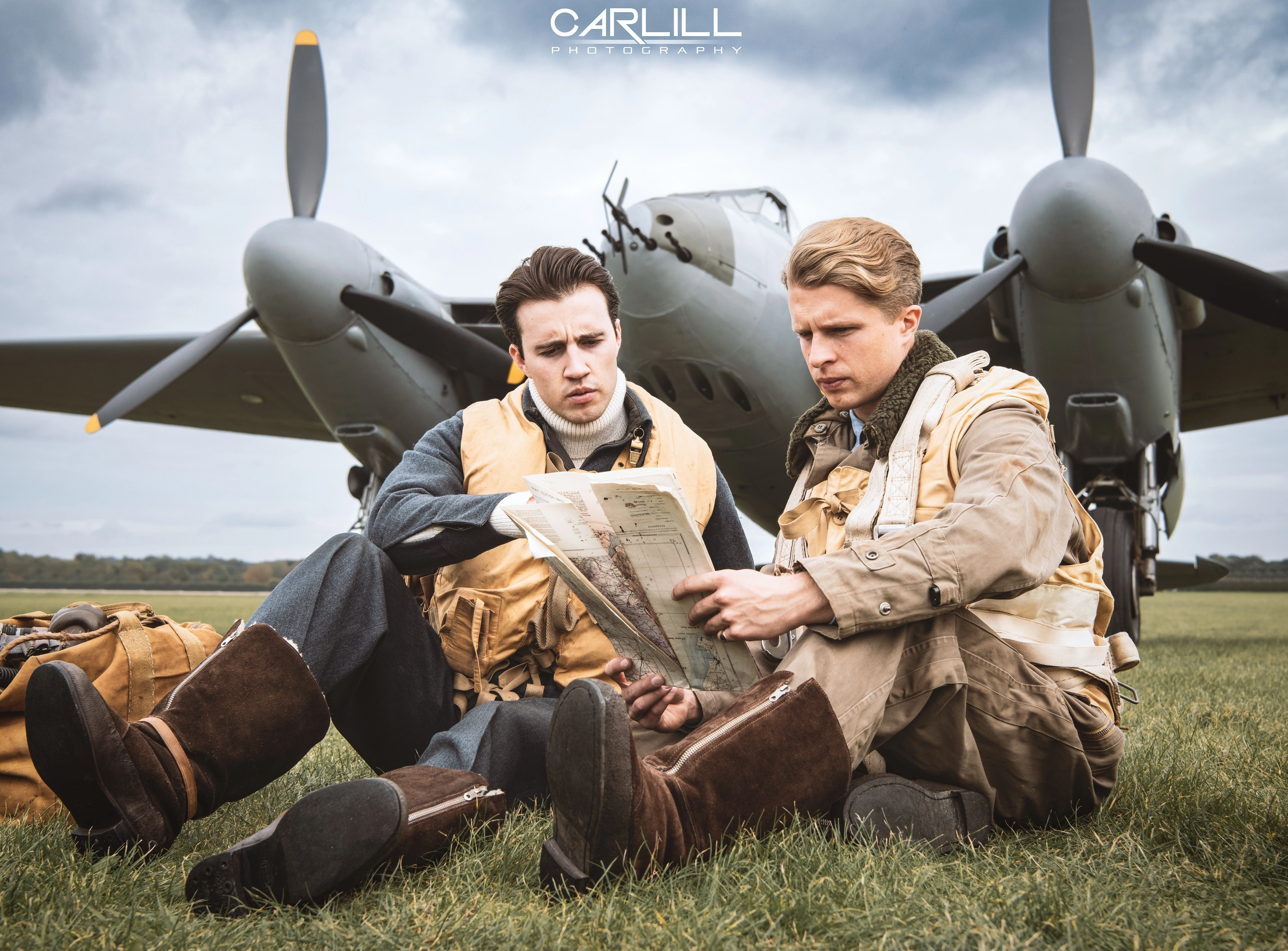
The people dominate the shot and aren’t posing, but more having an active discussion with something in their hands.
There are different groups of people that you tend to photograph with aircraft, which I would group as Reenactors/living historians, Actors, Models and Professional Reenactors. The pros and cons of taking pictures of these different groups are as follows;
Reenactors/Living Historians
Pros – They love what they do, they have probably read more books that you thought possible and know about every detail of their kit. They have the best kit and know what would and wouldn’t be realistic with their look (e.g. hair) and the way they act (hands in pockets, holding hats etc.). This group loves what they do, therefore probably are doing it for free. If you want a picture of a radio operator setting up a radio in a Lancaster, this is the type of person you need. If you get a good picture of them, they will likely share it widely across social media.
Cons – Kit costs a lot of money. Young people (under 30) don’t tend to have a lot of money. Especially during WW2, most people who flew aircraft were young (under 30). Therefore, having the right kit and looking the right age reduces the numbers of suitable reenactors out there. Also, the quality of reenactors varies significantly. Generally, this group are the least confident at having their pictures taken.
Top Tips – Get them to do something with their hands! This is very important as they are generally self conscious and will not stand and interact naturally when you put a camera in front of them. Generally, this group will be very static compared with the other groups. Maps, clipboards, gas mask bags, pilots notes or a camera, get them to do something that will enable them to interact more naturally. Most of this group love the history, so talk to them about who they are portraying first and their faces will be much more lively when taking the picture. You want to either try and capture this group without them knowing you are doing it (paparazzi style) or better still give them very specific direct instructions, e.g. look at him, walk towards this spot.

They are doing something with their hands and look like they have been interrupted as we all got them to look up as if someone was coming over with instructions
Actors
Pros – They are getting paid so will be much more willing to do what you ask them to do and are therefore easier to direct. You can pick them so they are the right age and look for the shot you are after. They are also used to improvising a scene and running through it multiple times. They are used to having their photos taken and are generally photogenetic and self assured. There are also a lot of actors out there, so if you use this group you are more likely to get unique faces vs other photographers.
Cons – They probably don’t know much about what they are portraying and therefore you need to arrange kit and hair styling. This is particularly difficult for non WW2. As they are more dynamic, you will need to direct them to get the most out of them vs the background and lighting. You are also paying them, so they cost more than reenactors/living historians.
Top Tips – Rather than telling them directly what to do given them a story to act, e.g. you have just seen your best mate shot down or you just finished the end of your tour and you are celebrating. Make them move and capture what they do, then ask them to repeat it a couple of times.
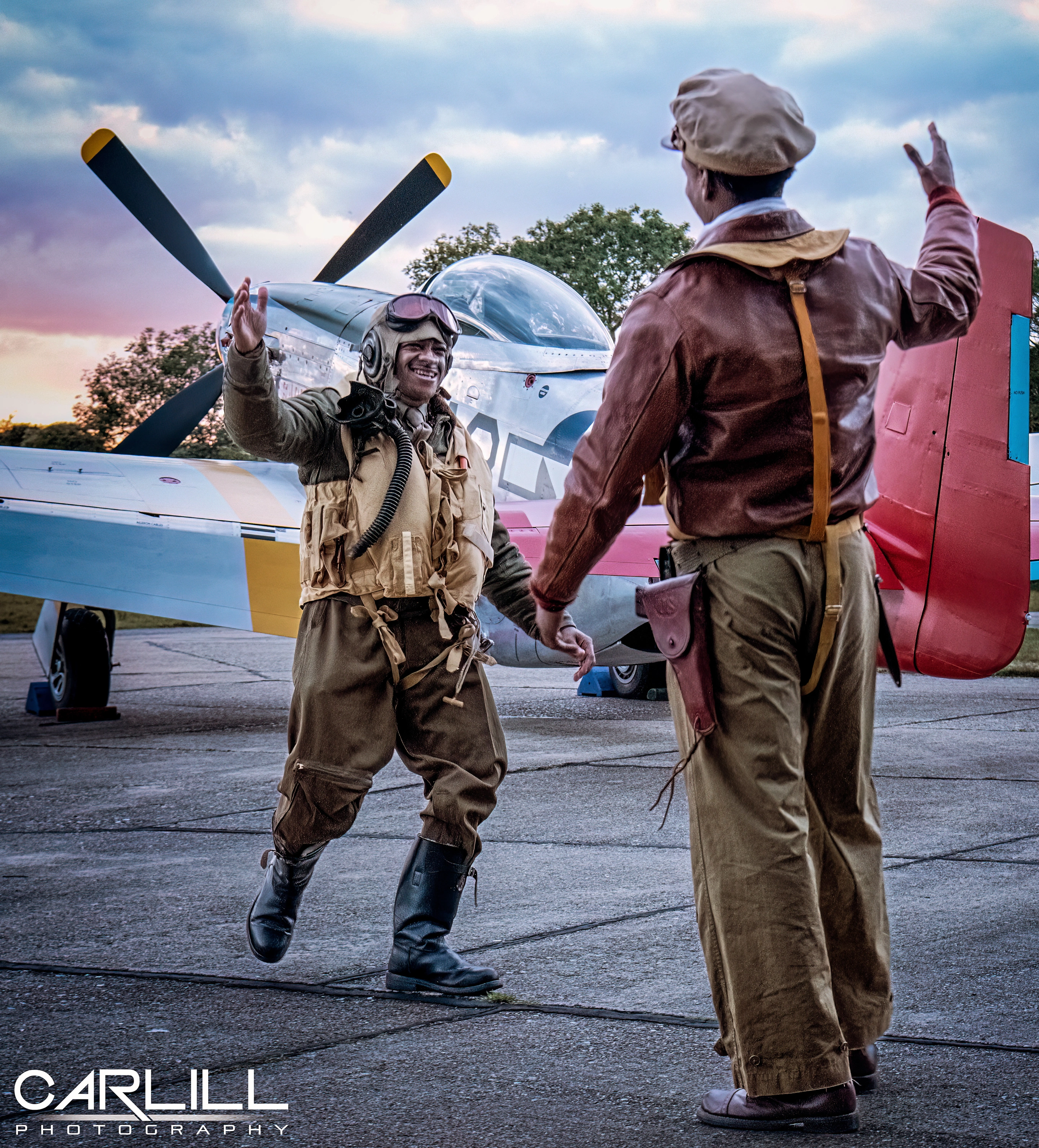
Without any props, we had nothing for the actors to hold, so instead did a number of action sequences of them meeting each other and celebrating after a mission. Again, the people dominate the shot, but the aircraft in the background gives the context.
Models
Pros – If you want to do a 1940’s pin up style shoot, you need a model who has the self confidence to put themselves out there in their underwear. They are used to being photographed by groups, so will work to make sure you get the right eye contact and body shape, no matter where the photographers are standing. They will generally not move much but will change pose a lot.
Cons – They only really cover specific types of shoots and are generally the most expensive.
Top Tips – Give them feedback. If something is working, tell them, so they can keep trying variations on that theme. Make sure you are moving around as this will help you be creative.

Models can pose, so you can focus on getting a particular shot/lighting.
Professional Reenactors
This group are generally reenactors who make money by doing it professionally/semi professionally, either as actors, working in museums, for education or for film/tv. It doesn’t mean that they have better kit then other reenactors/living historians, just that they are used to being paid to do it so usually are more used to being directed or improvising and are usually more confident in front of a camera.
Pros – The combination of the pro of reenactors/living historians and actors
Cons – There aren’t many of them, so you tend to see the same people being used a lot.
Top Tips – Like with actors, tell them the story and let them go. As they know the history, they can probably recreate specific historical moments and will get more of the details right
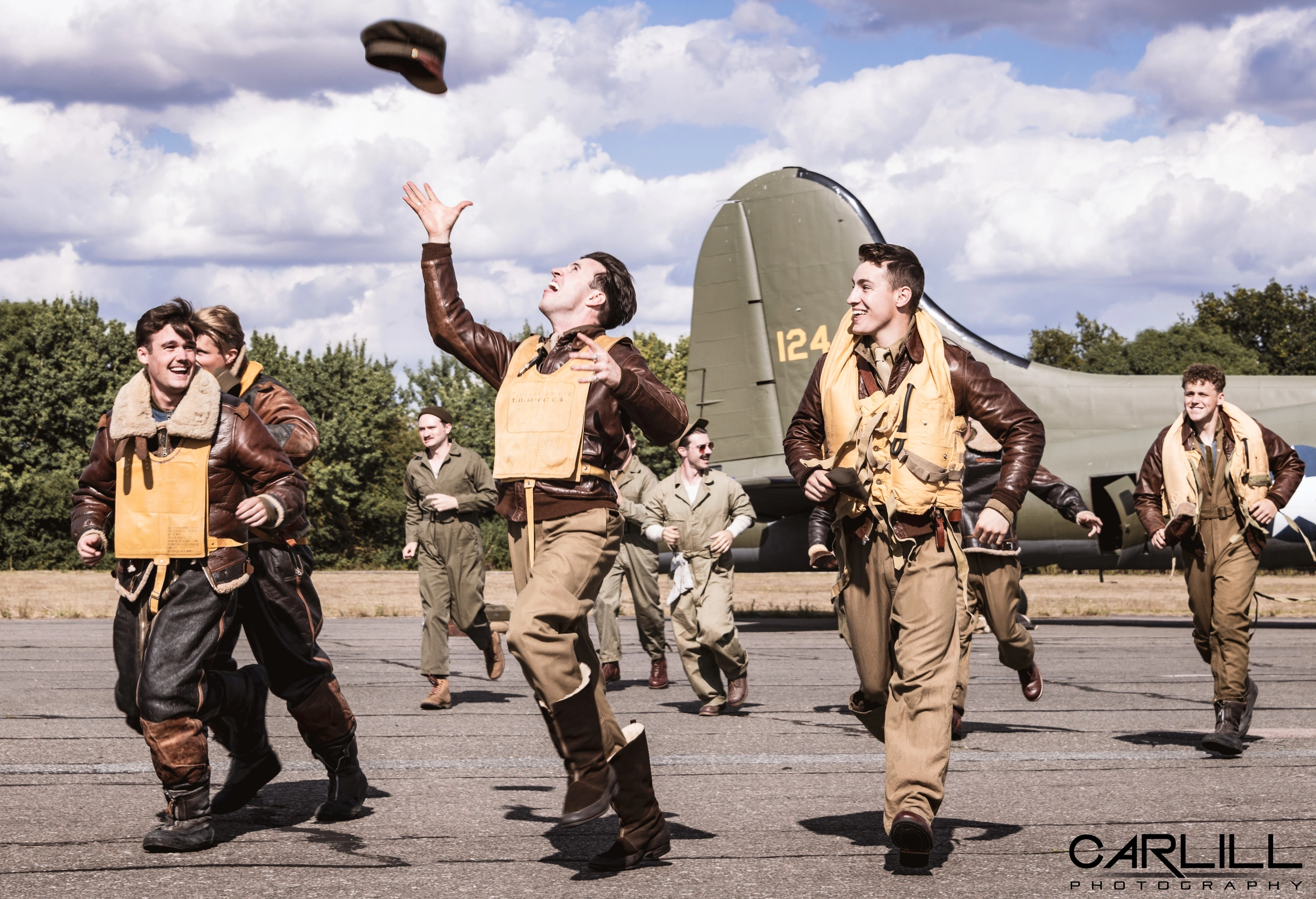
An action shot where the professional re-enactors have been given a brief and are improvising.
Types of shoot/events in the UK
The type of people you get usually depends on the type of shoot/event being organised and therefore you need to go into the different type of shoots with the right expectations of what and how to interact with the different people and the types of shots you’re likely to get.
Airshow/Living History Events
Usually included for free in the entry price or a small charge. E.g. the flightline walks at Duxford or the Victory show or a living history event like the Yorkshire air museums “We’ll meet again”. Here you will find almost exclusively re-enactors/living historians. You will likely struggle to direct them much and you will need to make a picture out of what you have. You may also need to edit out some of the background “stuff’ that comes from these types of events and the limits of flexibility of positioning.

A paparazzi style long range shot on the flight line walk. The harness gives the reenactor something to do with his hands.
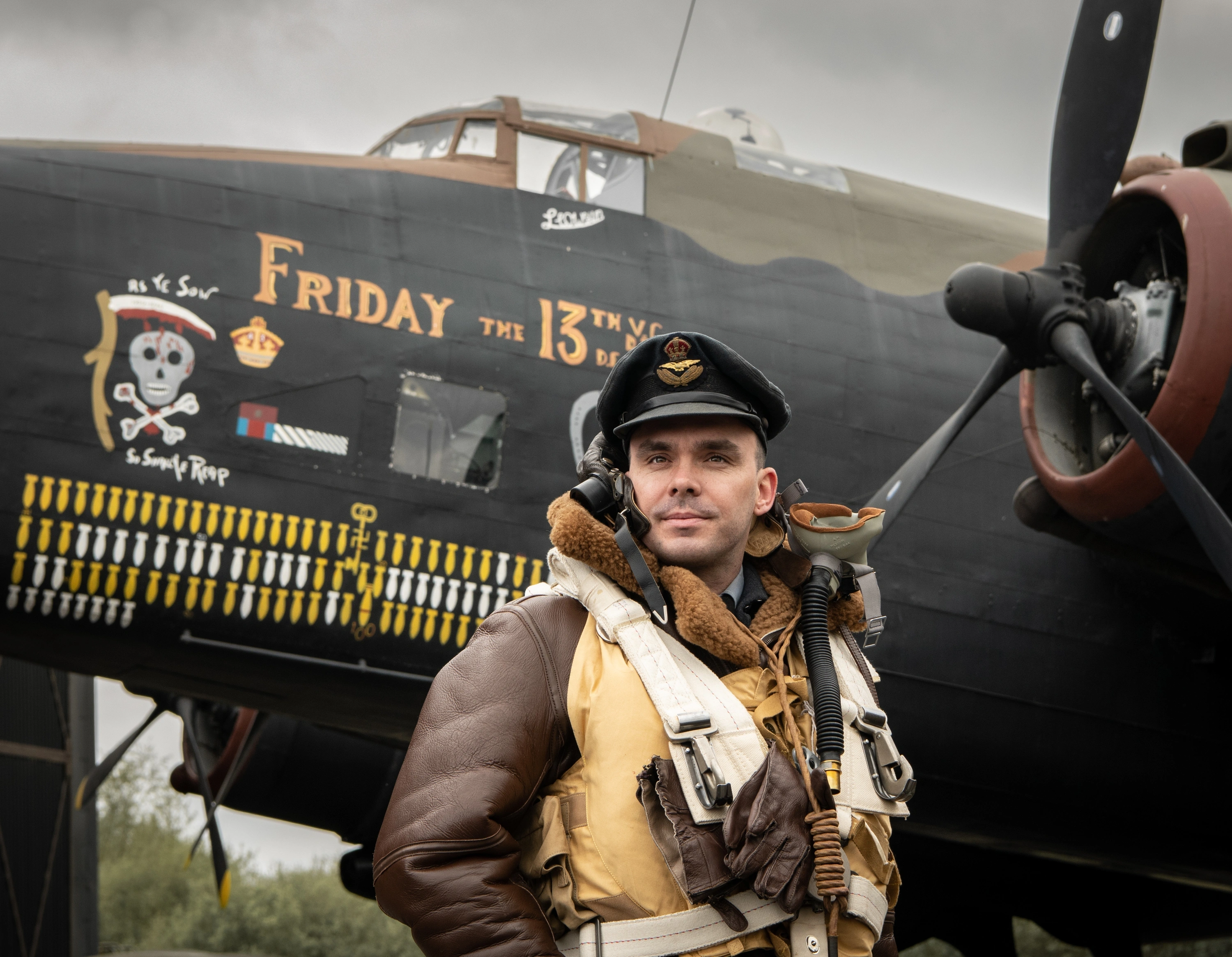
A posed shot at the Yorkshire air museum. Again, your eye focuses on the person.
An Organised Group Shoot
(e.g. COAP, Timeline events, Shuttleworth, Duxford) usually with 50+ photographers and usually between £50-100. You tend to get a mix for reenactors and professional reenactors and they will be typically be directed by the organisers most of the time. They are a great way to get lots of shots, likely correctly lit. The downsides is that you will likely have similar images to the other photographers and the composition of the picture will be strongly influenced by the organisers style. At these types of shoots, it always pays to try and quickly grab close up shots or borrow one of the reenactors while they are not being used if you want something more unique. The key thing here is being quick. If it takes you a minute to find the right settings on your camera for the shot, then you will become really unpopular really quickly! Practice learning where the buttons are on your camera at home in low light, so you can react quickly, as this will give you more opportunities for unique shots. When you are at the shoot, move around, go to the edges, you will likely find different angles to other people, e.g. if there is a group of reenactors that the main group is shooting, try focussing on just one person but from the side.

The “standard” shot was from 90 deg round to the right looking head on at the crew, some of whose were walking to the truck crew. By focussing on one person in the scene, you can tell a layered story.
A Private Shoot
Usually organised with 5 or less fellow photographers. These shoots come will lots of artistic freedom, but only if you use it and direct and light the people in the shot. As you are having to pay for the access to the aircraft and to hire the people, this is a much more expensive option (£300-500 each for a day). You need to be confident to do this kind of shoot and it will take a lot of organising and kit (e.g. taking lights and reflectors). You are better learning and practicing at the other types of shoot first. Generally for a day shoot, you need a plan or story board of specific shots you want to get, so spend time thinking this through in advance.
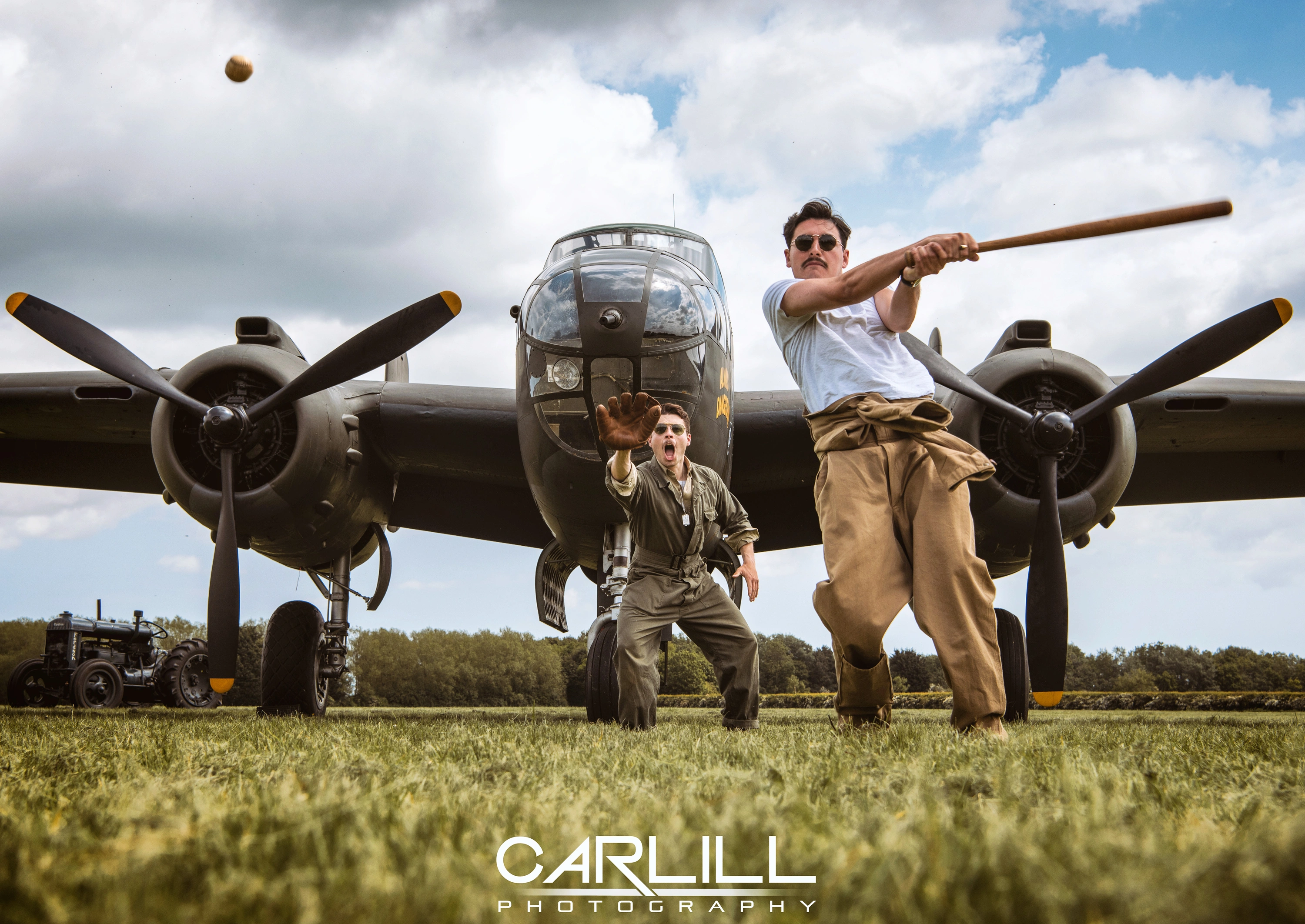
With the freedom of not having to worry about other photographers, I was able to lie in the grass right underneath the pitcher and get the action and the depth of field.
I hope this was a useful introduction to those of you who might consider including people in your shots! Story telling is a big part of photography and I think that including people can make your overall portfolio more engaging.
Did you know our blogs are written exclusively by our members? We'd love for you to come and experience what COAP Online is all about!
Not yet a member?
Enjoy a free 30-day trial!
COAP Online membership brings 100s of aviation photographers from around the world together in a friendly, helpful and inspirational community. You'll enjoy monthly challenges, competitions, livestreams, blogs, exclusive discounts, meet-ups and more!




